Incident Priority
Establish an incident classification scheme and add priority to incidents for effective triage
Incident priority allows you to classify incidents based on a level of prioritization. Just as alerts can have different severity levels and notifications can have different urgency levels, incidents can be classified into different priority levels. Priority labels are customized on a per-account basis, so you may configure the priority scheme in PagerDuty to match the scheme you may already be using in other tools.
- Establish an Incident Classification Scheme
- Configure Incident Priority
- Prioritize an Incident
- Disable Incident Priority
Establish an Incident Classification Scheme
Before you configure incident priority, you should first establish an incident classification scheme. Your incident classification scheme establishes a common language and criteria for communicating about incident levels and response elements. This information is ideally shared organization-wide. It’s helpful to keep in mind that this scheme is not just for technical responders and support staff; other parts of your organization may need to be aware of incidents and their assessed impact, and occasionally participate in incident response, as well.
There are several steps to establishing an incident classification scheme:
- List the incident classification levels: This is frequently P1 through P5 (for priority), or SEV-1 through SEV-5 (for severity). Typically, the lower the number, the higher its impact (i.e., P1 is more important than P5).
- Define what each level means: Describe the impact and characteristics that apply for each classification level. These guidelines must be clear and objective enough that responders can accurately assess an open incident and assign exactly one level to it. That said, incidents may be upgraded or downgraded as the situation evolves.
- Define the expected response: For each classification level, identify the expected scope and response urgency. Some organizations have a formal or informal service level agreement per level, as well.
For more information and examples, please read Severity Levels from our Incident Response Guide.
If your organization does not have an incident classification scheme in place, determining a small number of classification levels is essential for effective triage and major incident response processes. If, on the other hand, you have more than five classification levels, think critically about how many levels would benefit your organization in practice. The more levels you have, the more complex and time-consuming triage can become.
Tip
The Incident Priority feature does not allow any of the five levels to be blank. If your organization uses fewer than five classification levels, you can enter
---for any unused levels.
Configure Incident Priority
After establishing your incident classification scheme, the next step is to configure the levels in PagerDuty.
Required User Permissions
The Account Owner and Admins/Global Admins can configure and edit Incident Priority levels.
To configure this feature, in the PagerDuty web app:
- Navigate to User Icon Account Settings Incident Settings tab.
- Toggle Enable incident priority levels to the on position.
- Under Incident Priority, you can classify incidents with five different priority levels. Customize your levels with the following:
| Field | More info |
|---|---|
| Priority Level | This is frequently P1 through P5 , or SEV-1 through SEV-5. |
| Color | Color labels are used to draw attention to the most important incidents in a dashboard or other view. We recommend using distinctive colors for the levels corresponding to major incidents; this boosts more important incidents’ visibility. For example, at PagerDuty we use red and orange for our two highest levels, and then blue and gray variations for less pressing incident levels. |
| Description (optional) | Describe the incident impact and characteristics that apply for each classification level. These guidelines must be clear and objective enough that responders can accurately assess an open incident and assign exactly one level to it. |
- Click Save.
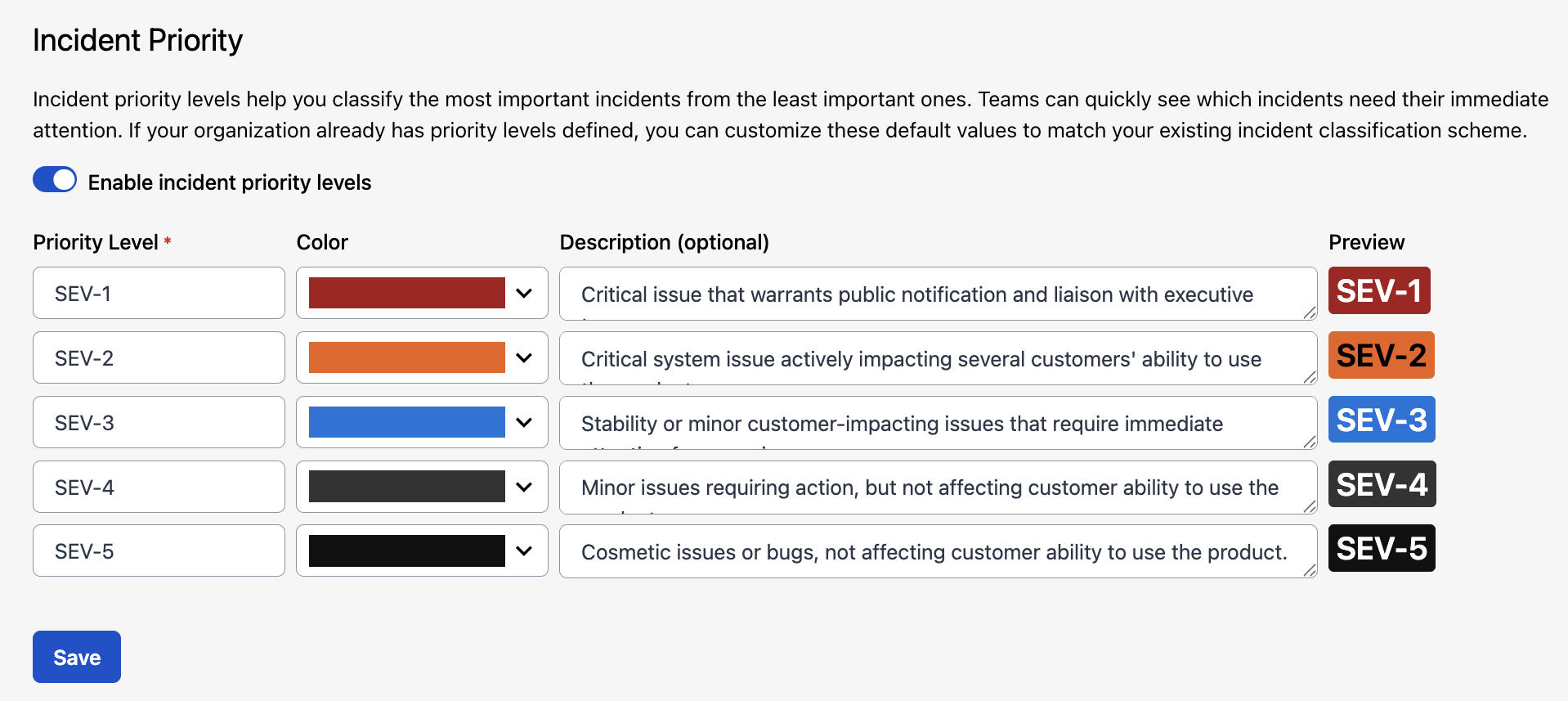
Configure incident priority
Priority is displayed on the Incidents page, as well as on an incident's details page in both the web app and mobile app.
Prioritize an Incident
Prioritizing incidents helps drive decisions around the response process and provides valuable context for others. When looking at an incident, the priority gives an immediate and clear indication of prior assessment that has been performed. Incident priority can be set at the time of creation, or after the incident has been triggered. The following is an incident with a priority level set, SEV-1:

Prioritize an incident during triage
In addition, priority is clearly displayed on the incident dashboard, making it easy to see when critical issues are active. You can sort incidents by priority on this page, so that whether looking at incidents for a single team or across your whole organization, you can instantly see critical issues:
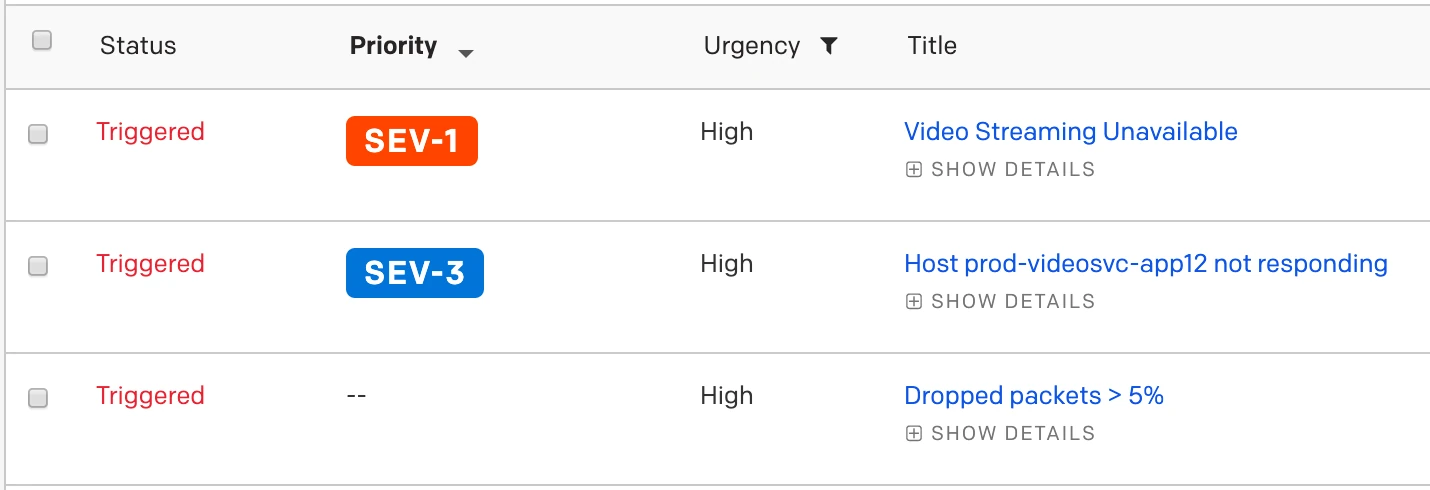
View incident priority
In the Web App
At Incident Creation
- Navigate to the Incidents page and click New Incident.
- Select your desired priority level from the dropdown.
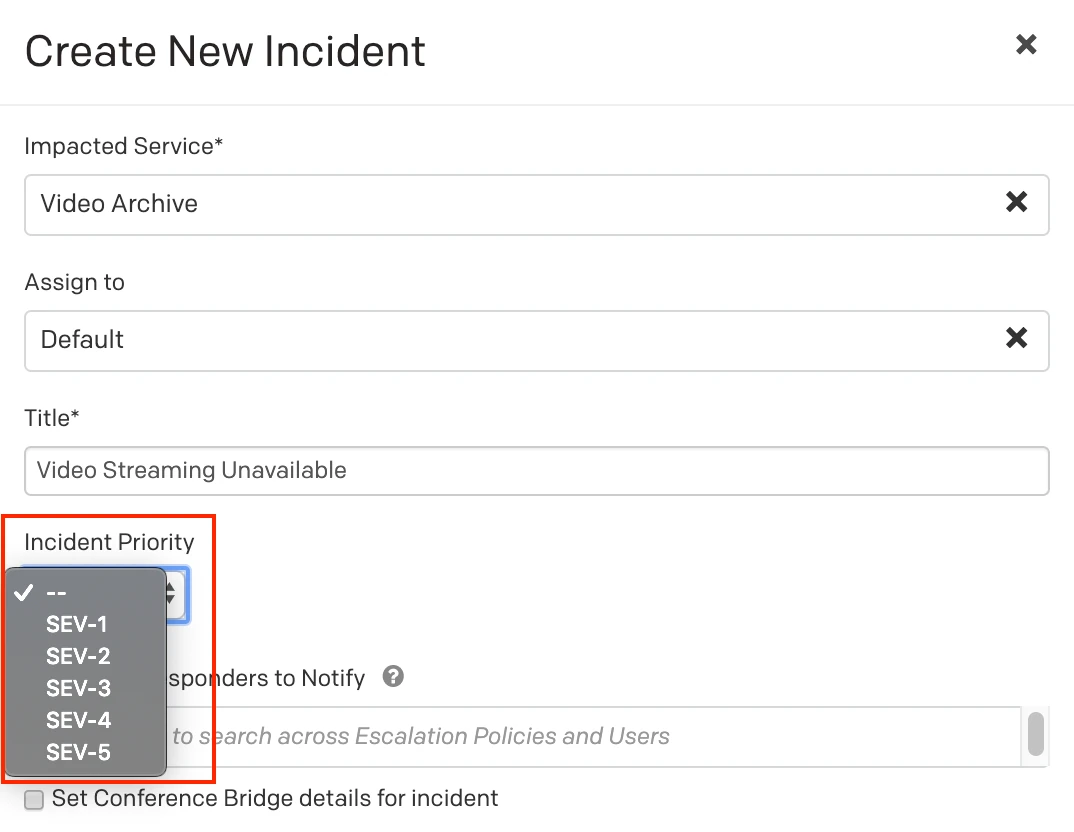
Set priority at incident creation
- Enter remaining incident details, and click Create Incident.
To an Existing Incident
- Find the incident that you would like to prioritize and select its Title to navigate to its details page.
- Click the Priority dropdown and select the desired priority level.
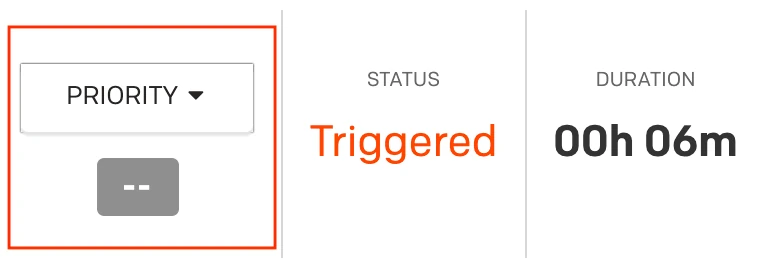
Edit an incident's priority
In the Mobile App
At Incident Creation
- Navigate to the Open Incidents screen, tap the overflow menu (top-right corner of screen) and select New Incident... .
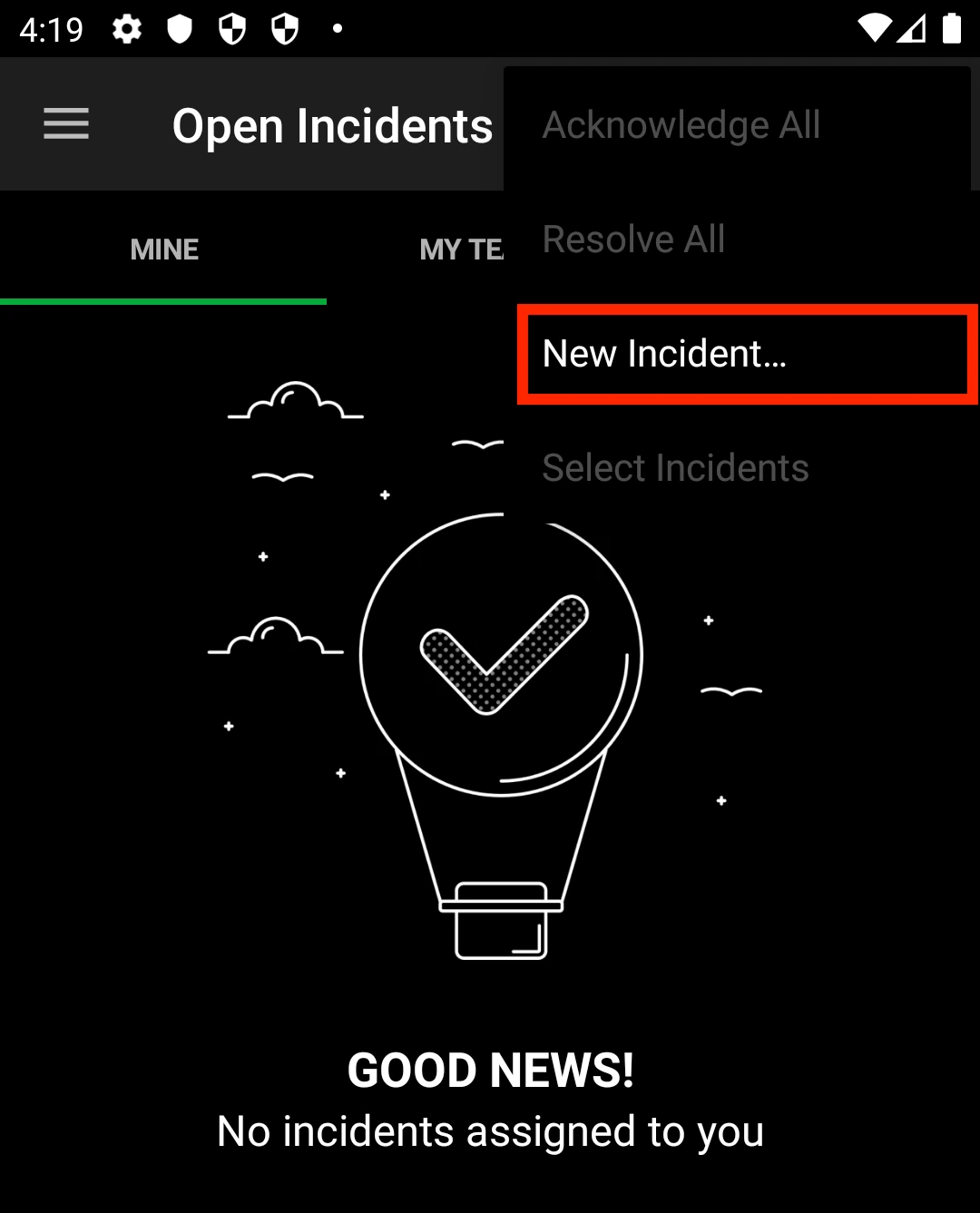
Priority in the mobile app
- Tap Priority and select the priority level from the defined list.
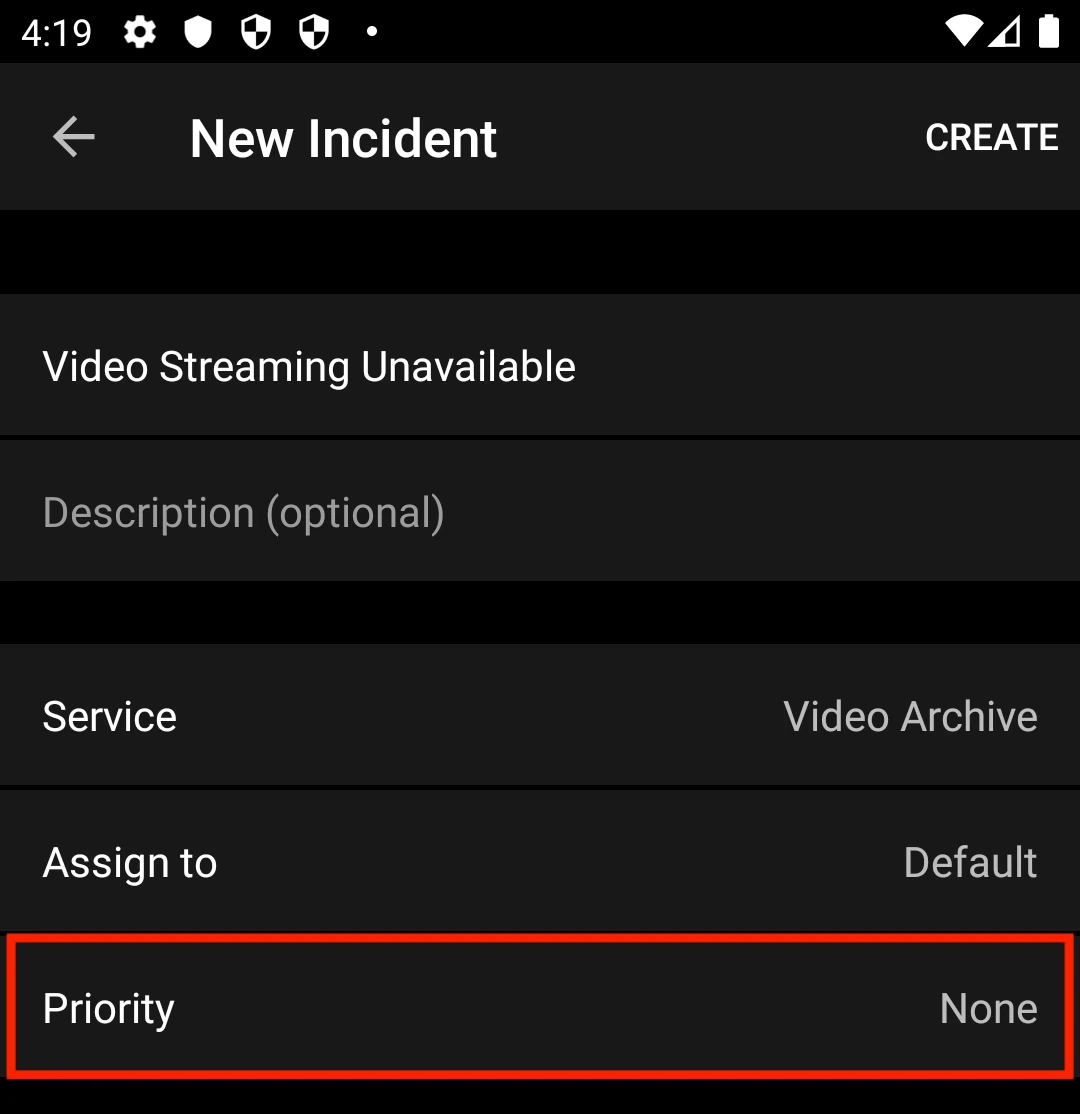
Select priority
- Enter any remaining incident incident details, and tap Create.
The incident will now have a label displaying its priority level:
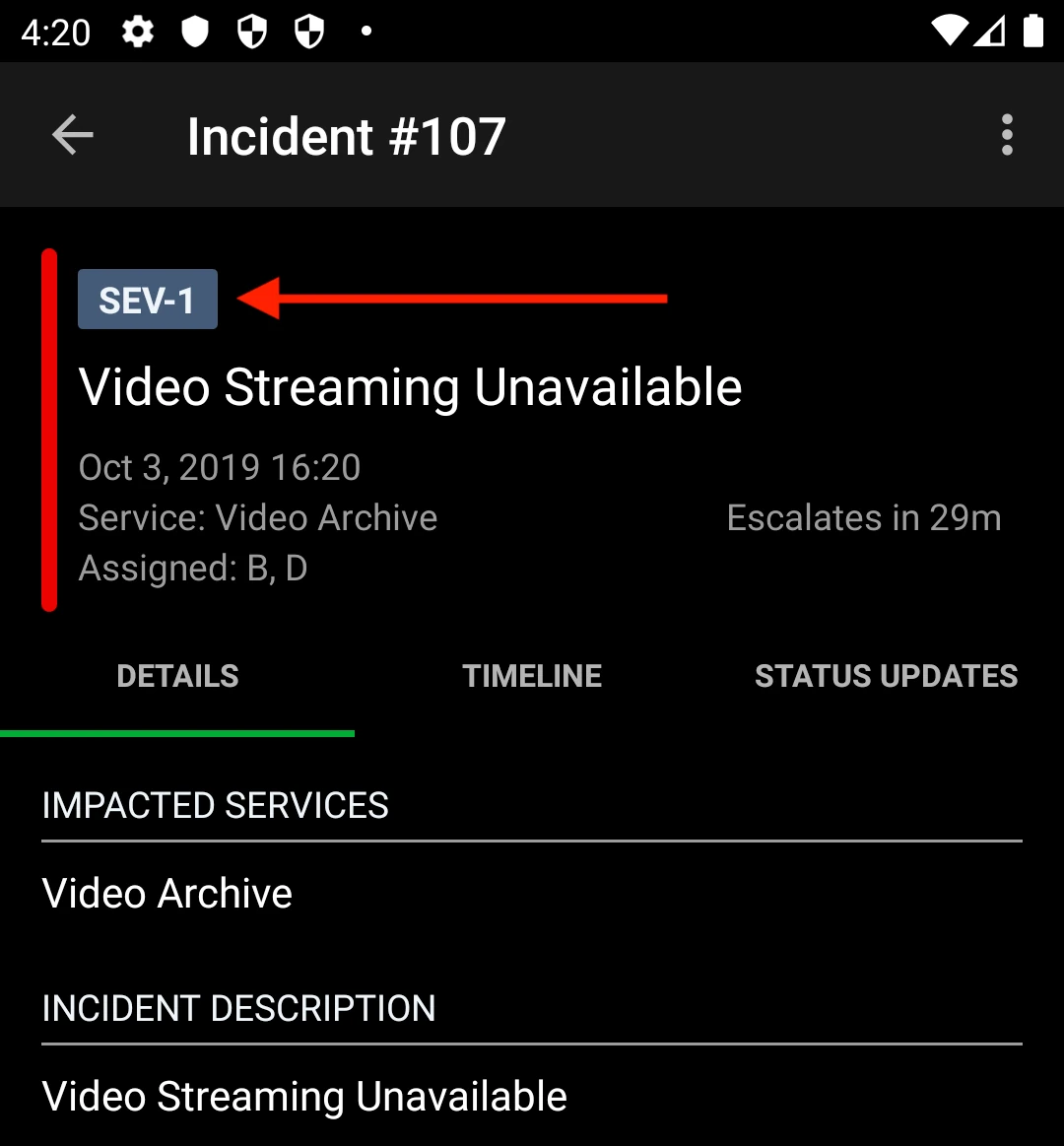
View priority
To an Existing Incident
- Find the incident that you would like to prioritize. Tap the incident’s name to navigate to its details screen.
- With the Triage tab selected, tap Add/Edit Priority.
- Select a priority level.
- Tap Confirm in the confirmation dialog box.
Via the REST API
In addition to the features available in the PagerDuty web app and mobile app, automated systems can also interact with incident priority. You can use the Incident REST API to specify an incident’s priority when it is created, and all relevant priority details are included when the API returns an incident object.
Please refer to our developer documentation for more information about working with incident priority:
Additionally, incident webhooks include information about an incident’s priority; please read our Webhooks Overview for more information.
Events API
Priority cannot be set from the Events API at this time.
Via Event Orchestration
Event Orchestration supports adding priority when an incident is created. Please read Incident Actions for more information.
Disable Incident Priority
The Account Owner can disable incident priority in the web app:
- Navigate to User Icon Account Settings Incident Settings tab.
- Toggle Enable Incident Priority Levels to the off position.
Note: Once disabled, your Incidents page in the web app will not display a Priority column.
Retained Configuration Settings
After disabling incident priority, PagerDuty retains your configuration settings. If you choose to re-enable incident priority at a later time, toggle Enable Incident Priority Levels to the on position — your historical settings will be preserved and you will not need to configure them again from scratch.
Updated 4 months ago
